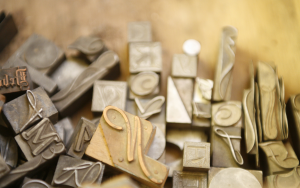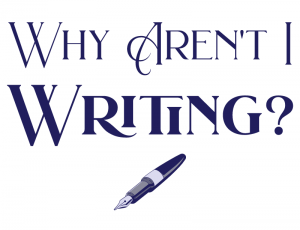Your brain craves novelty, so changing even tiny things can help creativity.
There were times during the writing of my pandemic novel where I got really, really bored. Not bored of the story nor of the telling of it, but bored of the act of sitting at my computer and typing out what was in my head. I wished I could just get the words out faster, without all the tedious typing and deleting and typing again.
Then I read an article about research by Daniel Oppenheimer, Connor Diemand-Yauman and Erikka Vaughan that showed that we remember more of what we read when it is presented in a more challenging font.
The authors theorized that by making the font harder to read the information would seem more difficult to learn. Based on the concept of disfluency, the students would concentrate more carefully on learning the material. Disfluency, which occurs when something feels hard to do, has been shown to lead people to process information more deeply.
At about the same time, I also learnt that the human brain is a real sucker for novelty. Anything new or unusual is catnip to our attention. Novel stimuli prompt the brain to release dopamine, which encourages you to continue doing whatever you’re doing because your brain is now expecting a reward.
A study by Dr Emrah Düzel found that:
A region in the midbrain (substantia nigra/ventral tegmental), which is responsible for regulating our motivation and reward-processing, responds better to novelty than to the familiar. This system also regulates levels of dopamine, a neurotransmitter in the brain, and could aid learning. This link between memory, novelty, motivation and reward could help patients with memory problems.
That made me wonder what would happen if I added a bit of disfluency and novelty into my writing practice by using unusual and slightly hard to read fonts. Could I fool my brain into being more interested in writing than it currently was?
I set my document to Alex Brush, which is a nice swirly font, and sat down to write. Sure enough, that particular writing session went far more quickly and successfully than the previous. Soon, I was combing Google Fonts for the most flamboyant, exuberant and ornate fonts I could find. After all, it’s the novelty that’s important, not the font, so if I used Alex Brush all the time, the novelty would wear off and I’d be back to square one.
Some of the fonts that I used were Allura, Dancing Script, Great Vibes, Italianno, Parisienne, Pinyon Script, Rochester, Tangerine, and Zapfino. I picked these for two reason: Firstly, I like script fonts with ligatures and other embellishments and, secondly, they aren’t quite as easy to read as Palatino, which is Scrivener’s default font.
You could just as easily use various serif, sans serif, or display fonts, as long as you pick a font that’s both harder to read and different to the one you usually write in.
Every time I sat down to write, I picked a new font. Sometimes, when a new font wasn’t quite enough, I changed the colour too. I personally like deep, jewel colours which work well for writing because they have a lot of contrast. So when a fancy font in black didn’t tickle my midbrain, a fancy font in dark purple did the trick.
And it worked. That simple act of regularly changing font, and sometimes font colour, got me through that mid-novel marathon.
Of course, any novelty will work. A different word processing program. A different writing environment. Listening to different music. Smelling different smells. Anything that makes our midbrain perk its little ears up and say, “Oh! This is new! This is exciting!” will do.
So the next time you feel a bit bored of the act of typing, ask what you can change.
{ Comments on this entry are closed }





